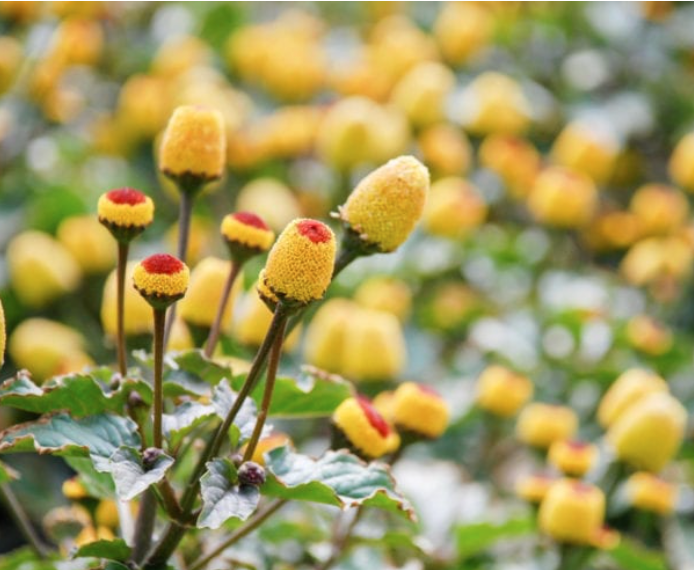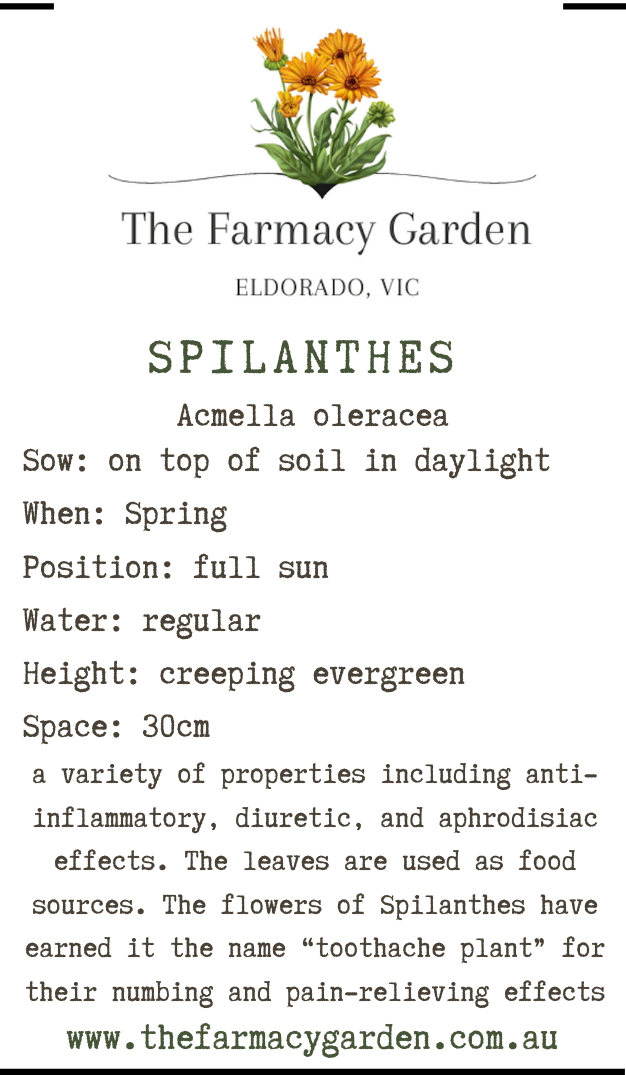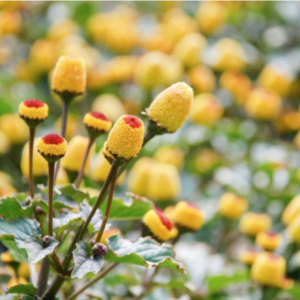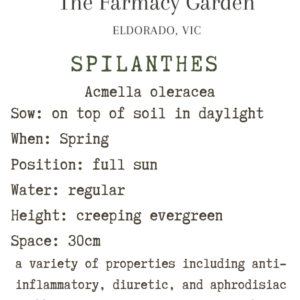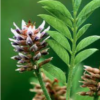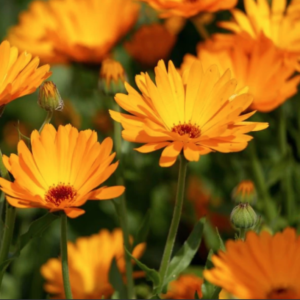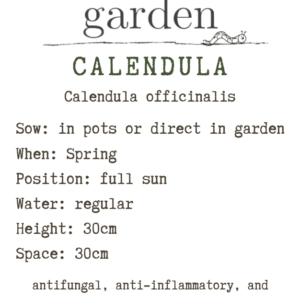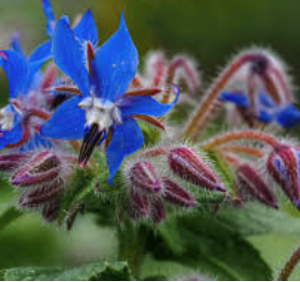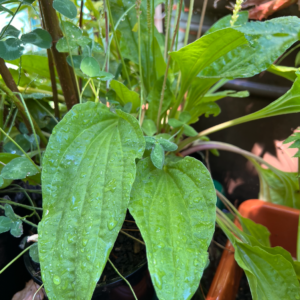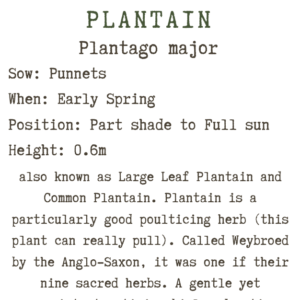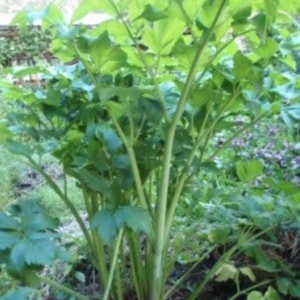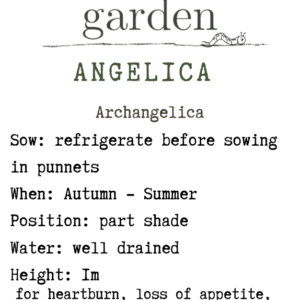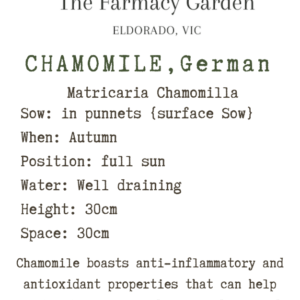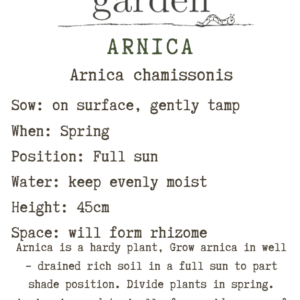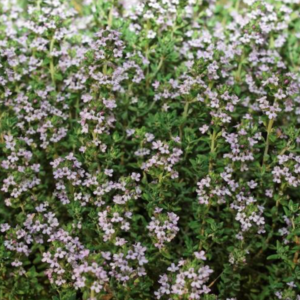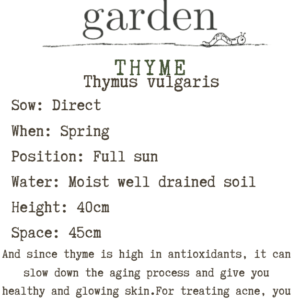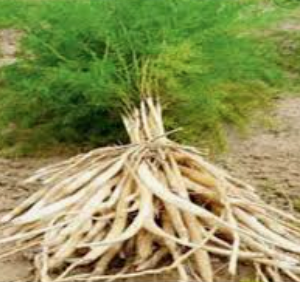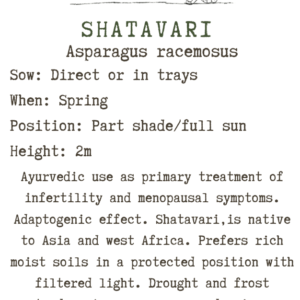Spilanthes (Toothache Plant) Seed, Acmella oleracea
$8.50 Original price was: $8.50.$6.50Current price is: $6.50.
Growing spilanthes is as simple as sowing in full sun to partial shade 10 to 12 inches (25-31 cm.) apart. Keep the soil moderately moist as the plant dislikes saturated or boggy ground and stem rot or general poor growth is likely.
Spilanthes or toothache plant is a lesser known flowering annual native to the tropics. Known technically as either Spilanthes oleracea or Acmella oleracea, its whimsical common name is garnered from the antiseptic properties of Spilanthes toothache plant.
The toothache plant is also known as eyeball plant and peek-a-boo plant in reference to its alien looking flowers. Resembling something akin to a daisy at first, upon closer inspection the blooms of Spilanthes toothache plant are shaped like yellow 1 inch (2.5 cm.) olives with a shocking deep red centre– very much like those of a large mammal. A perennial plant that is grown mostly as an annual in colder zones.
GROW: Very easy plant to grow from seed. However seeds need light to germinate so do not cover. If you remember this then success is mostly assured. In colder climates is best to start seeds indoors to give them a good start and ensure good robust plants for the growing season. Growing spilanthes is as simple as sowing in full sun to partial shade 10 to 12 inches (25-31 cm.) apart. Keep the soil moderately moist as the plant dislikes saturated or boggy ground and stem rot or general poor growth is likely.
HARVEST: If harvesting for maximum effects then harvest only the flowers during the year. If picked on a regular basis the plant will produce multitudes throughout the year. The highest amounts of spilanthol the plants most active ingredient are in the flowers. Pick flowers when they are large and elongated to ensure the maximum yield, harvesting weekly or bi-weekly is often most effective. The rest of the plant can be harvested in full during the fall before the flowers start to fade into seed. Make sure this is a few weeks before the frost to ensure high amounts of spilanthol. If the leaves begin to turn bronze its really time to harvest the plant. We recommend cutting all the foliage first then pulling the roots as this keeps the soil from the foliage and reduces cleaning time.
While leaves can be harvested throughout the year this reduces the spread of the plant and thus the number of flowers it produces. Unless the leaves are particularly required for culinary use leaving the leaves encourages the plant to grow larger and produce more flowers. Since the highest concentrations of spilanthol is in the flowers its more prudent to harvest those and leave the leaf for later in the year.
Caution. When harvesting we recommend wearing protective gloves as constant contact with the plant can numb the skin. Wash gloves and hands thoroughly after handling the plant before touching anything else. Do not rub eyes! Can cause temporary eyelid droop.
USE: The numbing properties are useful in the garden for rubbing on stings bites and scrapes to dull the pain for short periods. The plant got its name ‘toothache plant’ because it has very high concentrations of spilanthol that act as an anesthetic/analgesic. It has been used since ancient times in India for the treatment of gum and dental problems. Have a toothache then take a flower, fresh or dried chew and pack it around the tooth it can remove the pain for up to 30 minutes or more.
Related products
Flower Seeds
Flower Seeds
Medicinal Herb Seeds
Medicinal Herb Seeds

